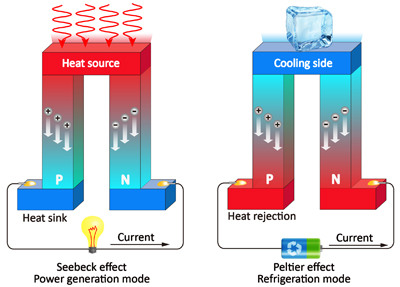A quest for sustainable thermal systems
Executive summary
Current solid-state thermal systems are derived from the caloric effect. Dependent on different materials, the effect takes into external stimuli and convert it into heat. This has received great attention in the past decade or two as the demand for more sustainable thermal systems is increasing. However, the pandemic caused the global manufacturers giving entire focus on improving their sales and profitability through product innovations and upgrades. However, the low-carbon footprint, energy loads and reduced consumables makes this technology a booming field with high expectation in HVAC and refrigeration markets in the future.
Using novel metal alloys and conductive polymers, ceramics and actuation fields, stakeholders are investing in creating a new generation of low carbon cooling/heating products that will dramatically reduce energy consumption and use no polluting gases. They aim to provide appliance manufacturers with a gas-free and highly-efficient solution leading to a highly differentiated product which better meets end-user needs and delivers a unique brand positioning.
Introduction
Eco-Friendly Thermal Systems
Systems that operate under the caloric effect (CE) have the potential to reduce energy use and operate without environmentally impacting refrigerants, making it an exciting proposition. Each type of CE has its own targeted applications and challenges when trying to get the technology to market.
Ever since the 2015 United Nations Climate Change Conference, COP 21, in Paris, industry leaders have had the support from governments to set out plans aimed at avoiding serious climate catastrophes around the world, seeking to reduce greenhouse gas emissions by increasing the use of zero carbon technologies.
Solid-State Heating systems are one such emerging, innovative and potentially low carbon technology. The interest in it as a new heating or cooling technology – and as an alternative to conventional vapor compression – has grown considerably over the past 15 years.
The principle of solid-state heating/cooling is based on a phenomenon known as the caloric effect (CE). Some of these technologies were discovered back in the 1800s, but only recently received huge support in academic, commercial and governmental research and development.
Conventional thermal systems utilize refrigerants like Chlorofluorocarbons (CFCs), hydrochlorofluorocarbons (HCFCs) and hydrofluorocarbons HFCs. These have adverse influences on the environment and greenhouse effect. On the other hand, solid state systems are refrigerant free and have been reported to reduce electrical consumption up to 50% those of conventional systems. However, these systems tend to use rare-earth metals, creating issues as wide distribution would scarcely provide. Even though some products have come to market, there are still challenges that need to be addressed before there is large-scale deployment of the technology. The main issue is the supply of magnetocaloric materials, which are scarce. Reducing the material content, or identifying new materials, would increase viability.
Types of Caloric Effects
Applying an external field in adiabatic conditions leads to temperature increase of the caloric material and it corresponds to a change in materials’ inherent stimuli sensor material, acting as a stimuli-responsive smart material.
Caloric Effect Classification
The CE involves continuous transitions that are likely to be thermodynamically reversible. CEs associated with first-order transitions show a field hysteresis. Large or small, it is inextricably linked with a corresponding thermal hysteresis. There are commonly 3 types of CE. Electrocaloric effect (ECE), Mechanocaloric effect (mCE) and magnetocaloric effect (MCE). For each type, an entropy variation in the material itself is detected especially for an isothermal process. What differs for the three is the driving field and external stimulus. Applying an external field in adiabatic conditions causes a temperature increase of the caloric material. Consequently, it corresponds to a change its inherent stimulus (magnetization for MCE, polarization for ECE, etc.). Decreasing the field intensity adiabatically would case a temperature reduction in the caloric material.
Electrocaloric Materials
The ECE is a phenomenon where a material shows a reversible temperature change under an applied electric field. This should not be confused with the thermoelectric effect (Peltier or Seebeck effect mode) in which a current through an electric conjunction with two dissimilar conductors causes a temperature change. Here, the effect comes from the voltage raising or lowering the entropy of the system, like any other caloric material in an isolated adiabatic setting. The discovery of giant positive and negative ECEs at certain temperatures has improved the cooling capacity of solid-state refrigeration in a well-designed cooling cycle. A dielectric material with a large number of polarization orientations and short polar-correlation, such as the relaxor ferroelectric, has the potential to achieve a large electrocaloric effect over a broad temperature range.

Thermoelectric effects
Mechanocaloric Materials
For mechanocaloric materials, there are two governing effects that create corresponding sub-categories: Elastocaloric and Barocaloric effects.
Elastocalroic Effect (eCE)
Materials with the eCE are solids capable of stress-induced reversible phase transformations (and strain) during which latent heat is released or absorbed. A phase transformation ensues when stress is applied or removed, causing an entropy difference between the two phases. Thus, the material heats up, where shape memory alloy can exhibit such behavior. A good elastocaloric material must exhibit a large latent heat, a large adiabatic temperature change, good thermal conductivity, long fatigue life, and low cost.
Barocaloric Effect (BCE)
BCE represents a thermal response where a hydrostatic pressure is applied and caused the necessary phase transformation. Considered the newest, barocaloric materials have been produced with generally cheaper materials with a giant BCE. The key challenge is to exchange heat between source and sink via the cyclically pressurized BCE material.
Magnetocaloric Materials
MCE describes the reversible heating and cooling of magnetic solids under a varying magnetic field. Considered as the most investigated of all solid-state technologies, magnetocaloric systems has received a big push by industries and government agencies such as NASA, Oak Ridge National Lab and Fraunhofer. The magnetic entropy change comes from modifying the ordering of the magnetic moments of the atoms that form the material, caused by changing the strength of the applied magnetic field. When there is no external heat exchange, the material changes its temperature to compensate the entropy change. Developing a good magnetocaloric material is most preferable when it’s near its Curie temperature (the temperature of its spontaneous magnetic ordering/disordering). This would lead to high efficiency refrigeration due to the additional heat being released or absorbed when the magnetic ordering coincides with a structural change affected by the field.
Magnetocaloric vs. conventional heat cycle
Summary & Outlook
Caloric materials have enabled the field of solid-state thermal systems to be a viable solution to greenhouse gas effect and environmental sustainability. It’s more efficient than conventional technologies, contains no gases or volatile liquids, non-hazardous, has low vibration and noise and re-usable with recyclable parts and components. The fabrication process is not yet optimized, and production costs are still high. This leads to challenges in addition to the scarcity of some of those materials towards global market. The potential for this technology expands towards unique and high-demanding applications such as space travel and high-loading conditions like in the military. Due to recent discoveries, CE has been used for HVAC-R prototypes that reduces electrical costs significantly while having variable sizing options like compact heaters/coolers for bio incubators. MCE is the closes one towards global marketing due to the many years of research, but solid-state heating in all of its types has a role to play in sustainable thermal systems.


